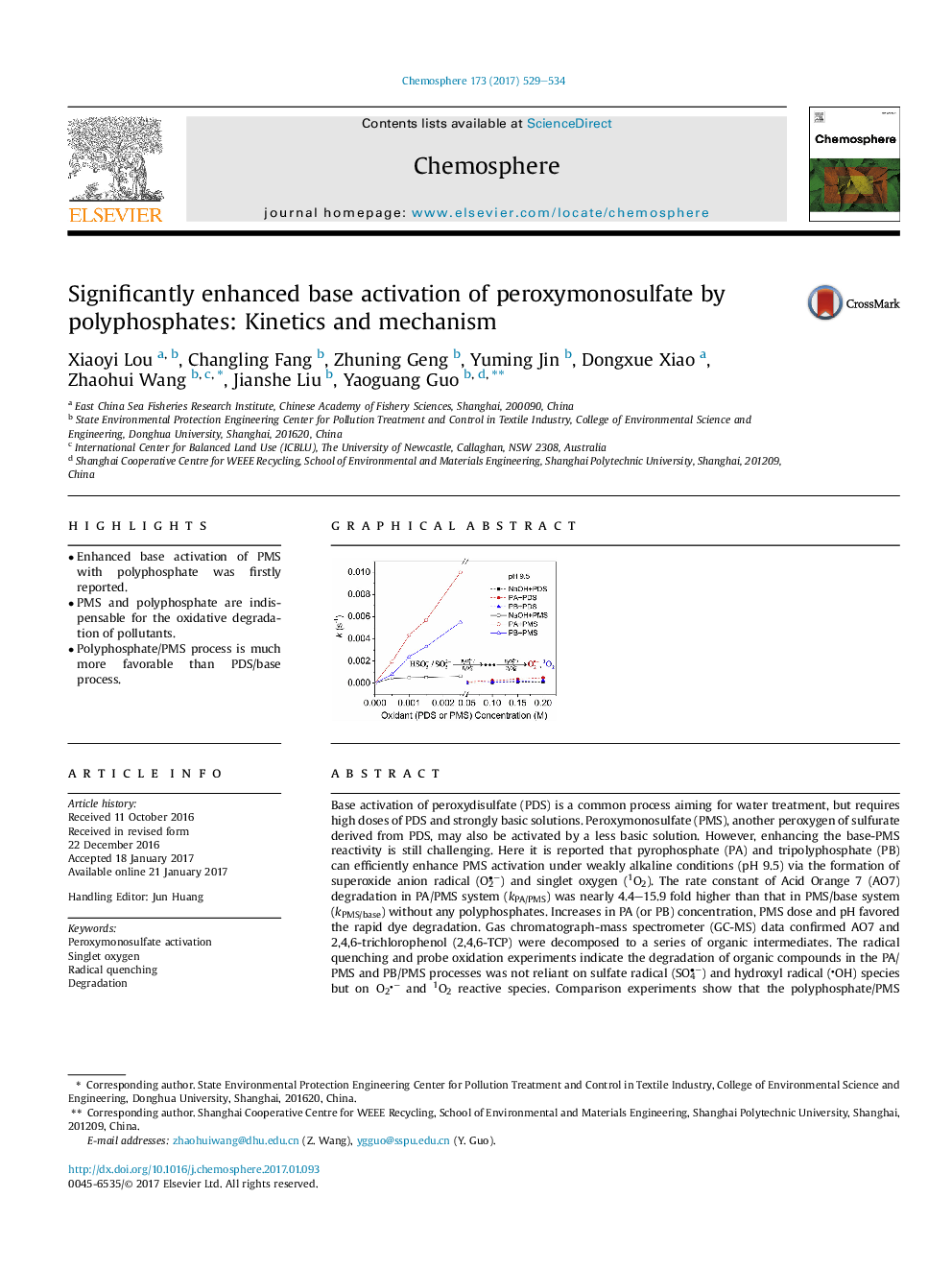| Article ID | Journal | Published Year | Pages | File Type |
|---|---|---|---|---|
| 5747434 | Chemosphere | 2017 | 6 Pages |
â¢Enhanced base activation of PMS with polyphosphate was firstly reported.â¢PMS and polyphosphate are indispensable for the oxidative degradation of pollutants.â¢Polyphosphate/PMS process is much more favorable than PDS/base process.
Base activation of peroxydisulfate (PDS) is a common process aiming for water treatment, but requires high doses of PDS and strongly basic solutions. Peroxymonosulfate (PMS), another peroxygen of sulfurate derived from PDS, may also be activated by a less basic solution. However, enhancing the base-PMS reactivity is still challenging. Here it is reported that pyrophosphate (PA) and tripolyphosphate (PB) can efficiently enhance PMS activation under weakly alkaline conditions (pH 9.5) via the formation of superoxide anion radical (O2â¢â) and singlet oxygen (1O2). The rate constant of Acid Orange 7 (AO7) degradation in PA/PMS system (kPA/PMS) was nearly 4.4-15.9 fold higher than that in PMS/base system (kPMS/base) without any polyphosphates. Increases in PA (or PB) concentration, PMS dose and pH favored the rapid dye degradation. Gas chromatograph-mass spectrometer (GC-MS) data confirmed AO7 and 2,4,6-trichlorophenol (2,4,6-TCP) were decomposed to a series of organic intermediates. The radical quenching and probe oxidation experiments indicate the degradation of organic compounds in the PA/PMS and PB/PMS processes was not reliant on sulfate radical (SO4â¢â) and hydroxyl radical (OH) species but on O2â and 1O2 reactive species. Comparison experiments show that the polyphosphate/PMS process was much more favorable than PDS/base process. The present work provides a novel way to activate PMS for contaminant removal using industrial polyphosphate wastewaters.
Graphical abstractDownload high-res image (176KB)Download full-size image
